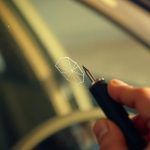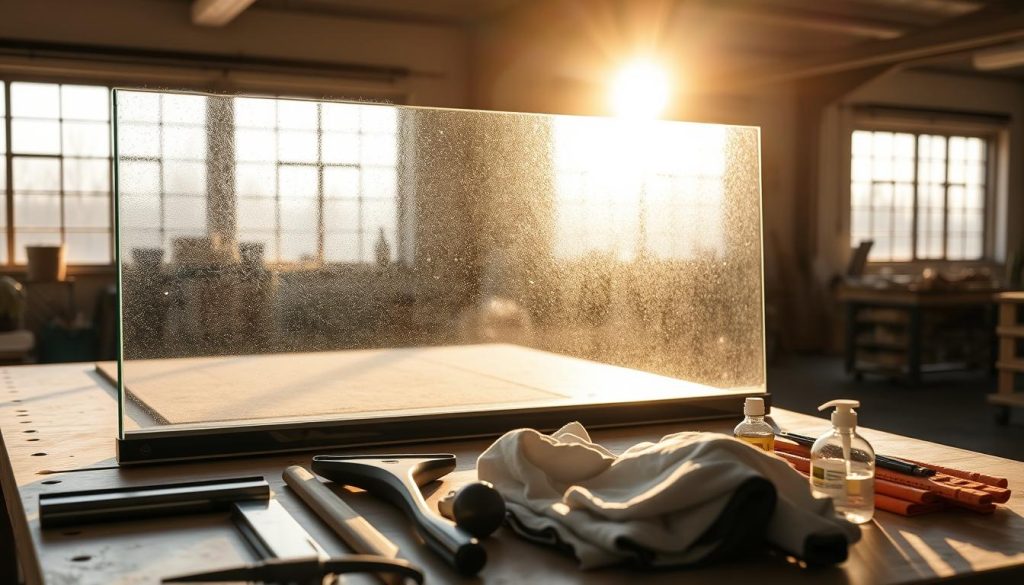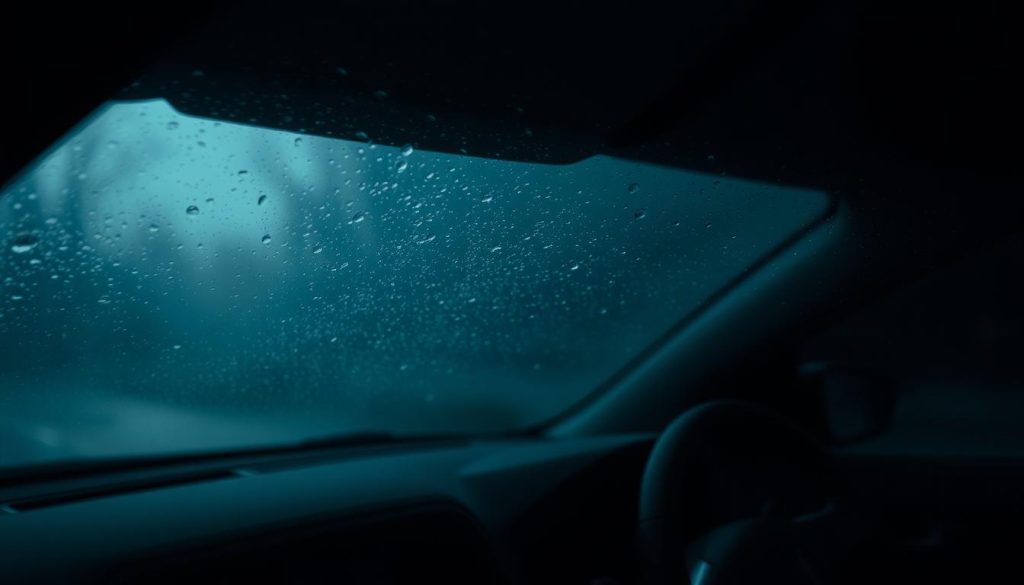
Improve Your Trade-In Value with a Quick Windshield Fix

How Insurance Covers Cracked Windshields in Texas
Replacing your vehicle’s windshield or other glass is a big deal. It’s important to fix moisture and fog issues to keep your view clear and safe.
After a glass replacement, you might see fog or moisture. This could be from bad installation or not drying it enough. To stop these issues, follow drying time tips and make sure the glass is sealed right.
If you’re dealing with fog or moisture issues after a glass fix, get help fast. At Miracle Auto Glass, our pros can check and fix your windshield or other glass damage. They make sure you’re safe driving.
Key Takeaways
- Proper installation is key to preventing moisture and fog issues.
- Following drying time tips can help avoid these problems.
- Regular inspections can identify problems early.
- Professional help is available for persistent problems.
- Miracle Auto Glass offers expert repair services for windshield and other glass damage.
Common Auto Glass Moisture Issues After Replacement
Moisture problems after auto glass replacement are more common than you think. It’s important to understand their causes for a clear view. Replacing your vehicle’s auto glass is not just about installing a new piece. It’s about doing it right to avoid future issues.
One big challenge is moisture that can build up between the glass and the interior. This can affect your view.
To better understand the issue, let’s examine the types of moisture problems that can occur. The table below summarizes the differences between immediate and long-term moisture issues.
| Moisture Issue Type | Causes | Effects |
|---|---|---|
| Immediate | Incorrect installation, inadequate sealing | Instant fogging or condensation |
| Long-term | Poor interior humidity control, seal failure | Gradual increase in fogging or condensation over time |
Why Condensation Forms on New Installations
Condensation on new auto glass installations happens when there’s a big temperature difference inside and outside your vehicle. This difference makes the air near the glass cool, causing condensation. Proper sealing is key to stop moisture from getting in. If the seal is wrong, you’ll face condensation problems.
For more info on the importance of quality materials in auto glass repair, visit Miracle Auto Glass.
Immediate vs. Long-term Moisture Problems
Immediate moisture problems come from wrong installation or bad sealing. These can cause fogging or condensation right away. Long-term problems happen over time due to bad interior humidity control or seal failure. Knowing the difference is key to fixing them.
If you’re dealing with ongoing moisture issues after auto glass replacement, get it checked by a pro. Contact Miracle Auto Glass for expert help with your auto glass moisture problems.
The Science Behind Windshield Fog Formation
Drivers often face foggy windshields after getting new auto glass. This problem comes from several scientific reasons. Knowing these can help you avoid or lessen this issue.
Temperature Differentials and Dew Points
Temperature differences between inside and outside your car cause fog. When your car’s air is warmer and more humid than outside, fog forms. The dew point, or the temperature when air can’t hold more water vapor, is key here.
When the windshield’s temperature drops below the dew point, fog appears. This is because the air can no longer hold the moisture.
How Vehicle Interior Design Affects Condensation
Your car’s interior design can lead to condensation problems. Materials like dashboard and seats can hold and release moisture. This affects the humidity inside your car.
Poor air flow inside can make things worse. Keeping your car well-ventilated and using products that absorb moisture can help. This can reduce fogging.
Understanding how fog forms on windshields can help you prevent it. If fog keeps coming back after getting new auto glass, talk to experts like those at Miracle Auto Glass. They can help solve the problem.
Critical Drying Time Tips for New Glass Installations
After putting in new auto glass, it’s key to let it dry fully. This time is important for the glue to dry right. It makes sure the glass sticks well to the car’s frame.
Minimum Waiting Periods Before Regular Use
It’s best to wait at least 24 hours before driving your car again. This lets the glue set right, avoiding leaks or fog. But, the exact time needed can change based on the glue and the weather.
Weather Considerations for Optimal Curing
The weather affects how well new auto glass dries. Different weather needs special care for the best drying.
Cold Weather Precautions
In cold weather, keep your car in a warm, dry spot if you can. Don’t let the new glass get too cold. It can slow down drying.
Hot Weather Adjustments
In hot weather, don’t let your car sit in direct sunlight for too long. It can dry too fast, causing bad bonding.
Signs Your Auto Glass Needs Additional Curing Time
If you see fog that won’t go away, leaks, or gaps, your glass might need more time. These signs mean your glass might not be dry yet. If you see these, talk to a pro for help.
| Weather Condition | Recommended Precaution | Potential Issue if Not Followed |
|---|---|---|
| Cold Weather | Keep vehicle in a warm, dry place | Slow curing process |
| Hot Weather | Avoid direct sunlight | Improper bonding due to rapid curing |
| High Humidity | Use a dehumidifier if possible | Moisture accumulation, fogging |

By following these tips, you can make sure your auto glass installation works well. This keeps your view clear while driving. If you’re not sure about drying or need help, reach out to Miracle Auto Glass for expert advice.
Proper Sealing Techniques That Prevent Moisture Intrusion
To avoid moisture issues after auto glass replacement, it’s vital to use the right sealing methods. Proper sealing is the first line of defense against moisture intrusion. It ensures your vehicle’s glass remains clear and free from condensation.
Professional Sealing Methods Used by Certified Technicians
Certified technicians use advanced sealing techniques to prevent moisture intrusion. They use high-quality sealants and follow manufacturer specifications for a watertight seal. Professional sealing methods prevent immediate moisture issues and reduce long-term problems.
How to Inspect Your Vehicle for Seal Integrity
Regular inspections can help identify seal issues before they become major problems. You can inspect your vehicle’s seal integrity using visual and physical testing methods.
Visual Inspection Techniques
Start by visually inspecting the seals around your vehicle’s glass. Look for signs of wear, cracks, or gaps in the sealant. Check for any discoloration or staining, which can indicate water intrusion.
Physical Testing Methods
For a more thorough check, perform a physical test by applying gentle pressure around the seals. Check if the sealant is firm and not easily displaced. You can also use a simple water test by spraying water around the glass and observing if it seeps through any gaps.
If you’re unsure about your vehicle’s seal integrity or notice any issues, consider consulting a professional for assistance. At Miracle Auto Glass, our experts can inspect and repair or replace your auto glass to ensure a proper seal. Don’t let moisture intrusion compromise your safety on the road – contact us today to fix your windshield or other glass damage.
Interior Humidity Control Strategies for Clear Glass
To keep your car’s glass clear and fog-free, you need to control humidity inside. This is key for clear driving views.
Optimizing Vehicle Climate Control Systems
Adjusting your car’s climate control is a smart move. It helps lower moisture inside. Use the air conditioning to dry the air, more so in humid weather.
Effective Moisture-Absorbing Products
Using climate control isn’t the only solution. Desiccant bags or packets can also help. Place them in your car to soak up extra moisture. They’re great for humid days or when your car sits idle.
Ventilation Practices to Maintain Ideal Humidity Levels
Good ventilation is essential for the right humidity. Regularly open your windows or use the vent. This swaps out moist air for drier air, perfect for humid driving.
| Method | Description | Effectiveness |
|---|---|---|
| Climate Control Optimization | Adjusting temperature and airflow | High |
| Moisture-Absorbing Products | Using desiccant bags or packets | Medium |
| Ventilation Practices | Opening windows or using ventilation system | High |
These strategies can greatly reduce fog and moisture on your car’s glass. For expert help with glass repairs and humidity control, reach out to Miracle Auto Glass.
Seasonal Approaches to Managing Auto Glass Moisture Issues
As the seasons change, so do the challenges of keeping your auto glass clear. It’s important to know how to handle these issues with each season. This keeps your visibility and safety on the road.
Winter Defrosting and Defogging Techniques
In winter, cold temperatures and high humidity cause fogging on your glass. Use your defroster and a microfiber cloth to dry the glass fast. Also, make sure your windshield wipers work well to clear snow and ice.
- Use the defroster to warm up the glass
- Apply a demisting spray or treatment to the glass
- Keep your windshield wipers in good condition
Summer Air Conditioning and Humidity Management
In summer, high humidity and heat cause condensation on your glass. Using your air conditioning helps manage humidity inside. Always check and replace the cabin air filter for best performance.
Tips for summer:
- Use the air conditioning to control humidity
- Regularly check and replace the cabin air filter
- Park in shaded areas when possible
Handling Spring and Fall Temperature Fluctuations
Spring and fall temperature changes cause condensation on your glass. Make sure your vehicle’s seals are good. Use a moisture-absorbing product inside your vehicle. Check your glass and seals often for damage or wear.

If you’re having trouble with moisture on your auto glass, get help. Reach out to Miracle Auto Glass for expert windshield repair or replacement.
Troubleshooting Persistent Fog and Moisture Problems
If you’re dealing with fog and moisture after glass replacement, finding the cause is key. You need to check if the problem is from the installation, the car’s ventilation, or something else. This approach helps figure out where to start fixing the issue.
Diagnosing Installation-Related Issues
First, look at the seal around the new glass. See if it’s sealed right, with no gaps or uneven spots. Make sure the glass fits well and the sealant is spread out evenly. If you spot any problems, you might need to redo the installation or get help from a pro.
Identifying Vehicle Ventilation System Problems
Your car’s ventilation system is important for keeping humidity levels down. If it’s not working right, fog and moisture can be a problem. Check your climate control settings and make sure the AC and heating work well. A good ventilation system helps prevent fog on your windshield.
When to Contact Miracle Auto Glass for Professional Help
If you’ve tried to fix it yourself and can’t, it’s time to call a pro. Miracle Auto Glass has the skills to tackle tough moisture issues and fix them for good. They can check the installation, adjust the ventilation, or take other steps. Getting help from a pro can save you time and keep you safe on the road.
Don’t let fog and moisture ruin your drive. By finding the cause and getting help when needed, you can have clear vision and stay safe. If you’re having trouble, think about contacting Miracle Auto Glass for expert advice and help.
Professional Solutions from Miracle Auto Glass Experts
At Miracle Auto Glass, our team is all about keeping your windshield clear. We know how annoying auto glass moisture issues can be. They can even make driving less safe.
Advanced Moisture Prevention Techniques
Our experts employ advanced moisture prevention techniques. They make sure your new glass is sealed well to keep out moisture. They use special tools to dry the area and apply top-notch sealants.
Premium Materials That Reduce Condensation Problems
We only use the best materials for our glass replacements. This includes premium glass and advanced adhesives. These are made to reduce condensation. Our team will help you pick the right materials for your car and where you live.
Post-Installation Support Services
At Miracle Auto Glass, we don’t just install and leave. We also offer post-installation support services. We make sure you’re happy with your new glass. We give you tips on keeping your glass clear and preventing moisture problems.
If you’re dealing with auto glass moisture issues or need a new glass, contact Miracle Auto Glass. Our team is ready to help you have a clear and safe drive.
Long-Term Maintenance to Prevent Recurring Moisture Issues
To stop moisture problems from coming back, you need to take care of your car’s glass. Simple steps can help a lot. Regular checks, the right cleaning, and watching for seal problems are key.
Quarterly Inspection Recommendations
Checking your car’s glass often is very important. Do it every three months. Look for water or fog between the glass and any damage to the glass itself.
Specialized Cleaning Products for Fog Prevention
Choosing the right cleaner is important for clear glass. Use anti-fog cleaning solutions made for cars. A microfiber cloth also helps keep the glass streak-free and clear.
Recognizing Early Warning Signs of Seal Failure
Knowing when a seal might fail is key. Look for fog, water, or less clear glass. If you see these signs, get your glass checked by a pro fast.
Following these tips can keep your car’s glass clear and safe. For ongoing fog or moisture issues, reach out to Miracle Auto Glass. Our team can find and fix the problem, keeping your glass in top shape.
Conclusion: Ensuring Clear Vision and Safety on the Road
Keeping your auto glass clear and dry is key for safe driving. Proper sealing is a big part of this. Regular checks and upkeep can spot problems early.
Knowing why auto glass gets foggy and how to fix it helps a lot. If you need help, experts like those at Miracle Auto Glass are ready to assist. They offer great service and advice on keeping your glass in top shape.
Sealing well and keeping up with maintenance stops moisture problems. Taking these steps makes driving safer and more enjoyable.




